-
Legendary Rat
HOFer

Tony Canadeo

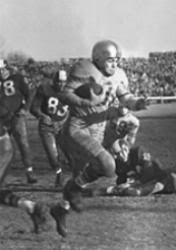

Tony Canadeo from little-known Gonzaga University was an unsung ninth-round choice of the Green Bay Packers in 1941 but it wasn't long before he earned the reputation of being a budding superstar who could – and would – do anything on a football field.
Because he was prematurely gray, he was popularly known as "The Gray Ghost of Gonzaga."
He played offense and defense, ran with the ball, threw passes, caught passes, returned punts and kickoffs, punted and intercepted passes.
In 11 years, he rushed for 4,197 yards, passed for 1,642 yards, recorded 69 receptions for 579 yards, gained 513 yards on punt returns, 1,736 on kickoff returns, and scored 186 points.
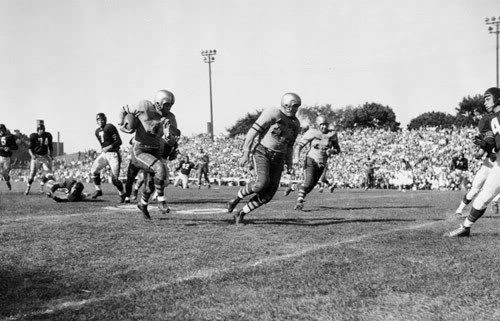
Canadeo was a tough, hard-nosed runner, with his career year occurring in 1949 as he ran for 1,052 yards and four touchdowns.
His 1,000 yard season was the first by a Packer (and only the third ever in the history of the league at that point).
He is one of only five players to have had his number retired by the team and he is a 1974 inductee of the Pro Football Hall of Fame.
He led the Packers in rushing in 1943, ‘46 and ‘49.
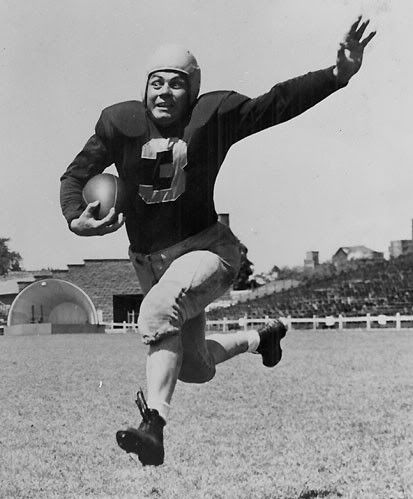
Canadeo had a split career in Green Bay, which was separated by his service in the Army during World War II in 1945.
A former teammate once summed up Canadeo’s career this way: “He wasn’t fast. He wasn’t big. He wasn’t elusive like a lot of runners. He wasn’t really powerful. But when Tony put that ball under his arm, he was a wild man.”
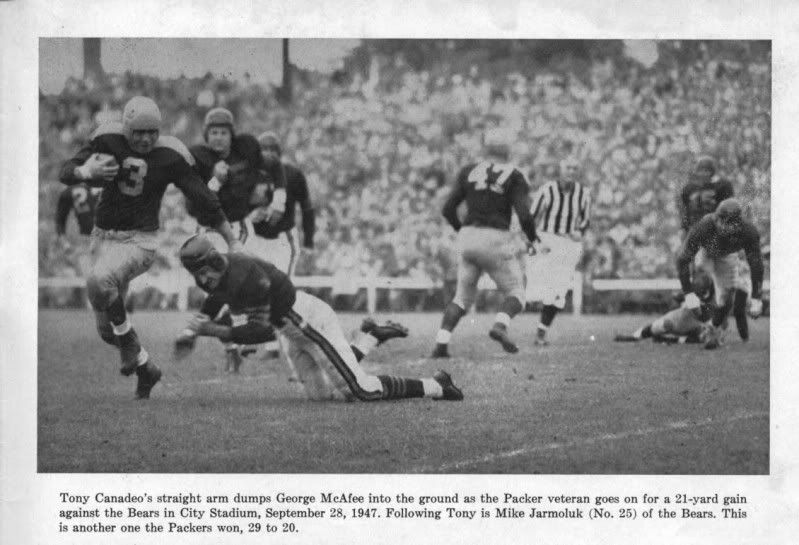
Altogether the versatile Canadeo gained 8,667 multi-purpose yards.
He also intercepted 9 passes and punted 45 times during his remarkable career.
Green Bay from 1941 through 1944 was one of the NFL's premier teams. During that period, Tony was a complementary player in the backfield, playing second fiddle to players such as Don Hutson, Ted Fritsch and Cecil Isbell.
While Hutson was charismatic and graceful, Canadeo was tough and gritty on the football field. Hutson had all the natural talent, while Canadeo had tons of heart.
He initially served as an understudy to veteran quarterback Cecil lsbell.
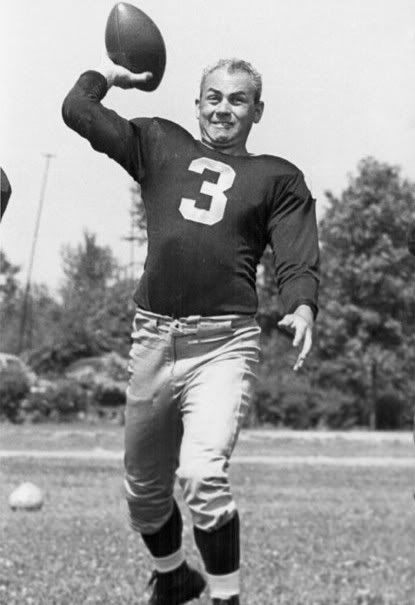
Then in 1943, he became the Packers' No. 1 passer. That year he was also named to the official All-NFL team.
When he returned from the Army in 1946, the Packers no longer were contenders and Canadeo’s role was significantly different.
For his final seven seasons in the league, Tony became a heavy-duty running back and, predictably, came through with flying colors.

Tony employed the attributes of most great athletes – determination, courage and tenacity – to attain Hall of Fame stature.
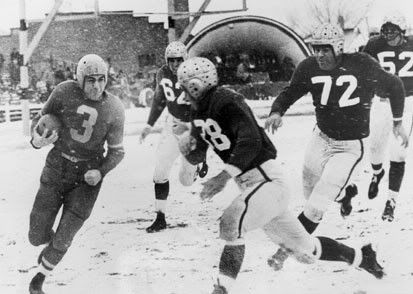
He was probably one of the best all-around players in Packer history," longtime Packers spokesman Lee Remmel said. "He could do just about anything. He was a good runner, a good blocker, a good returner and a good receiver. He was one of the toughest players the Packers have ever had, an extremely hard-nosed player."
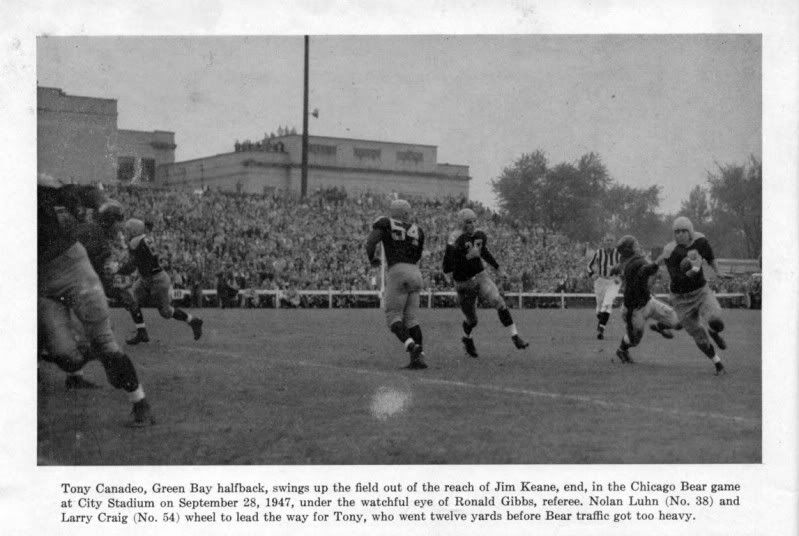
"I would say he would be classified as an icon among all those who were part of the Packers," said Robert Parins, the team's president from 1982 to 1989. "I think his contribution to the Packers really was with people away from Green Bay. He had great name recognition wherever he went."
"He was one of the greatest we had," said Tom Miller, a teammate of Canadeo's in 1946 and one of his best friends. Everyone in the league knows him and how good he was. He could not only carry the ball and field punts, but he could catch passes. He was a good receiver and a good guy. He was liked by everybody. He didn't have an enemy in the world. He was one of the best-liked guys in Green Bay and a hell of a football player."
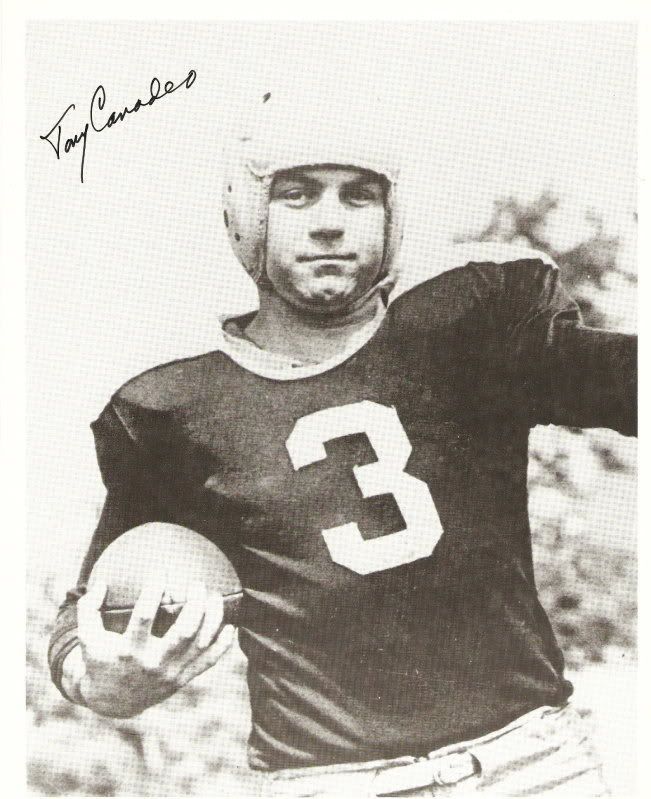
After his retirement, Canadeo worked as a broadcaster with Ray Scott, doing color commentary on Packers games.
On March 7, 1955, he became a member of the team's board of directors.
On April 28, 1958, he was elected to the executive committee.
On May 3, 1982, he was named a vice president.
It was shortly after he became a member of the executive committee that he was involved in the hiring of Lombardi, a little-known assistant coach from the New York Giants.
After Lombardi joined the team in 1959, Canadeo struck up a friendship with the dictatorial head coach. The two shared Italian heritage and Catholic religion in a town very different from where both grew up. "They were very, very close friends," Parins said. "Even after Vince left, their families remained close. Tony spent a lot of time with him after games."
Canadeo remained behind the scenes during his years on the executive committee, but often he was front and center during league meetings. He was so well-known around the NFL that he helped give the Packers an identity when he and Parins traveled to NFL functions.
Though not a native of Green Bay, Canadeo embraced it like his hometown and the Packers like his family. He attended games until his health began to fail and remained a director emeritus with the Packers until his death.
"He was quite close to the organization all of the time," Parins said. "He loved the organization. He loved the Packers. He died when they lost and rejoiced when they won."

 Posting Permissions
Posting Permissions
- You may not post new threads
- You may not post replies
- You may not post attachments
- You may not edit your posts
-
Forum Rules

















 Reply With Quote
Reply With Quote